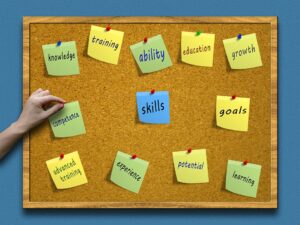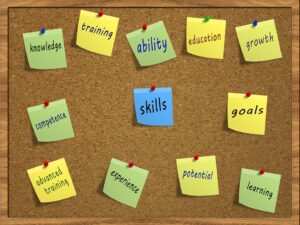
Motivation is a complex psychological phenomenon that plays a pivotal role in our everyday lives. From the moment we wake up to the time we go to bed, motivation influences our decisions, fuels our actions, and shapes our behaviors. Understanding the science of motivation not only provides insights into our daily choices but also offers strategies for enhancing personal achievement and well-being.
Understanding Motivation
At its core, motivation can be defined as the internal and external forces that stimulate our desire and energy to be continually interested and committed to a task. It is the driving factor behind human behavior — propelling individuals toward goals and influencing the effort they are willing to invest.
Research has categorized motivation into two primary types: intrinsic and extrinsic.
Intrinsic Motivation
Intrinsic motivation refers to engaging in activities for their own sake, driven by personal satisfaction or interest. Examples include pursuing hobbies, learning new skills, or participating in sports purely for enjoyment. This form of motivation is often associated with higher levels of creativity, satisfaction, and overall well-being.
Psychologist Edward Deci and Richard Ryan developed the Self-Determination Theory, which posits that intrinsic motivation flourishes when individuals feel autonomous, competent, and connected to others. This theory suggests that when people are allowed to choose their tasks, develop their skills, and feel secure in their social environments, their intrinsic motivation deepens.
Extrinsic Motivation
In contrast, extrinsic motivation involves completing a task to attain an outcome separate from the task itself, such as rewards or recognition. This can include factors like money, grades, praise, or trophies. While extrinsic motivation can be effective in the short term, over-reliance on external rewards may undermine intrinsic motivation, leading to decreased interest and satisfaction over time.
The Psychology of Motivation
The Role of Needs
Abraham Maslow’s Hierarchy of Needs is a well-known psychological theory that illustrates how motivation is influenced by various levels of human needs. According to Maslow, individuals must fulfill lower-level needs (such as physiological and safety needs) before they can pursue higher-level needs (such as social belonging, esteem, and self-actualization).
Meeting each tier of needs creates a foundation for motivation and personal growth. For example, a person struggling to meet basic needs may find it challenging to pursue educational or personal development goals. In contrast, someone who has a secure job may feel motivated to explore creative passions or interpersonal relationships.
The Impact of Emotions
Emotions also play a significant role in motivation. Positive emotions can boost motivation, encouraging individuals to pursue goals with enthusiasm and vigor. Conversely, negative emotions can lead to feelings of despair, procrastination, or avoidance. Understanding the interplay between emotions and motivation can help individuals manage feelings more constructively—thus enhancing their motivation.
The Neuroscience of Motivation
Recent advancements in neuroscience have shed light on how motivation is processed in the brain. The brain structures involved in motivation include the prefrontal cortex, amygdala, and the dopamine pathways.
Dopamine and Motivation
Dopamine, often referred to as the “feel-good” neurotransmitter, is essential for motivation. It is released during pleasurable experiences and plays a critical role in reward-seeking behavior. When a person anticipates a rewarding outcome, dopamine signals the brain to feel pleasure, reinforcing the motivation to pursue that goal.
Moreover, research indicates that dopamine’s role isn’t limited only to reward; it also contributes to the motivation behind striving for goals. The anticipation of success, along with its associated dopamine release, can create a virtuous cycle of motivation and achievement.
Applying Motivation Science to Real Life
Understanding the science of motivation allows us to harness it in practical ways. Here are some effective strategies:
Set Clear Goals
Setting clear, achievable goals can significantly enhance motivation. Goals provide direction and a sense of purpose, which can energize individuals to take action. The SMART criteria (Specific, Measurable, Achievable, Relevant, Time-bound) can guide goal-setting, helping people stay focused and motivated.
Create a Supportive Environment
Social support plays a crucial role in intrinsic motivation. Surrounding oneself with encouraging peers, mentors, and family can foster a growth-oriented mindset. Collaborative environments where individuals feel connected and supported can enhance intrinsic motivation levels.
Foster Autonomy
Encouraging autonomy in tasks—whether in educational settings, the workplace, or personal projects—can boost intrinsic motivation. Allowing people the freedom to make choices increases their investment in a task, leading to greater satisfaction and sustained effort.
Embrace Challenges
Rather than avoiding challenges, embracing them as opportunities for growth can enhance motivation. This mindset shift, often referred to as a “growth mindset,” encourages individuals to pursue learning and development, viewing obstacles as a natural part of the journey.
Conclusion
The science of motivation is a multifaceted field, influenced by psychological theories, neuroscience, needs, emotions, and personal experiences. Understanding what drives us can empower individuals to foster greater intrinsic motivation, navigate external pressures, and achieve their goals more effectively. By applying the insights gleaned from motivation research, individuals can cultivate a resilient and positive approach towards their ambitions—ultimately leading to a more fulfilling and purpose-driven life.







